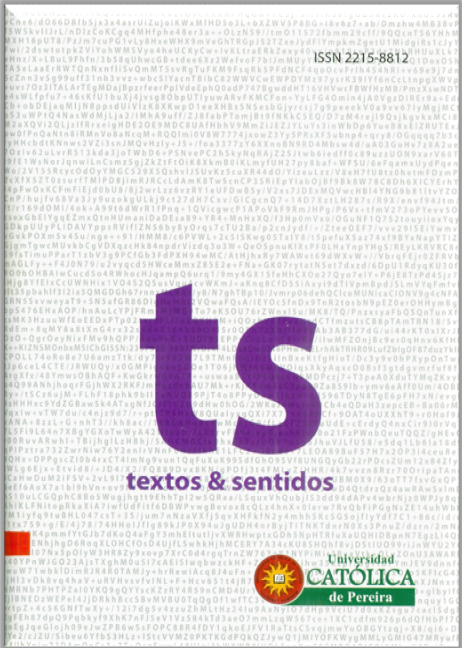Uncertainty management within the institutional communication strategy of the ‘gobierno en línea’ program in Risaralda
Keywords:
E-government, public policies, new institutionalism, uncertaintyAbstract
This paper offers the main findings around the research on the institutional communication strategy program called ‘Gobierno en línea’ which seeks to improve efficiency in communication processes among governmental administration, organizations and citizens. It also aims to reduce opportunities uncertainty provided by the Government in several areas, as well as some productive arrangements. In addition, a comparative method is used on the institutional communication from the Government of Risaralda, the Ministry of Agriculture, and the Ministry of Mines and Energy websites, which are addressed to the “panela” producers, coffee and mining guilds. It is concluded that there is an asymmetry of information, as it is not presented as expected by the guilds mentioned for this research in the Department.
References
Congreso de la República (2011). Ley 1450 de 2011. Recuperado de http://www.colciencias.gov.co/sites/default/files/upload/reglamentacion/ ley_1450_de_2011-plan_nacional_de_desarrllo.pdf
Furubotn, E. & Richter, R. (2005). Institutions and Economic theory: The contribution of the new institutional economics. Michigan, US: The University of Michigan Press.
Gobernación de Risaralda (2013). Gobernación con Resultados. Recuperado de http://www.risaralda.gov.co
Lammers, J. & Barbour, J. (2006). An institutional theory of organizational communication. Communication Theory, 16, 356-377 Recuperado de: http:// macromorphic.com/docs/ITOC_Communication%20theory_2006.pdf
Madon, S.; Reinhard, N.; Roode, D. & Walsham, G. (2007) Digital inclusion projects in developing countries: processes of institutionalization. En: 9th conference on social implications of computers in developing countries. Sao Paulo. Brazil.
Maheshwari, K.; Gurbaxani, A.; Mahulikar, P. & Sainath, L. (2006) E-government and democracy: Societal context of information & communication age. In: Agarwal, A. & Ramana, V. (Ed.), Foundations of e-government.(pp. 165-170) Archana Arcade, India: Computer Society of India.
Ministerio de Agricultura (2013). Ministerio de Agricultura y Desarrollo Rural. Recuperado de http://www.minagricultura.gov.co/inicio/default.aspx
Ministerio de Minas y Energía (2013). Minminas. Prosperidad para todos. Recuperado de http://www.minminas.gov.co/mme/
North, D. (1990). Institutions, institutional change and performance. New York, US: Cambridge University Press.
Pereira, H. & Borges, J. (2010). Digital inclusion and e-government policies. En: O. Jambeiro & M. Palacios (Eds.), Brazilian perspectives in digital environments: communication policies, e-government and digital journalis (pp.77-108). Salvador: Edufba.
Presidencia de la República de Colombia (2012). Decreto 2693 de 2012. Recuperado de http: //programa.gobiernoenlinea.gov.co/apc-aa-files/ eb0df10529195223c011ca6762bfe39e/decreto-2693-de-2012.pdf
United Nations Public Administration Network (Unpan) (2011). The United Nations global e-government survey 2010. UNPAN. Recuperado de http://egovernments. wordpress.com/2010/04/15/united-nations-global-e-government-survey-2010/

